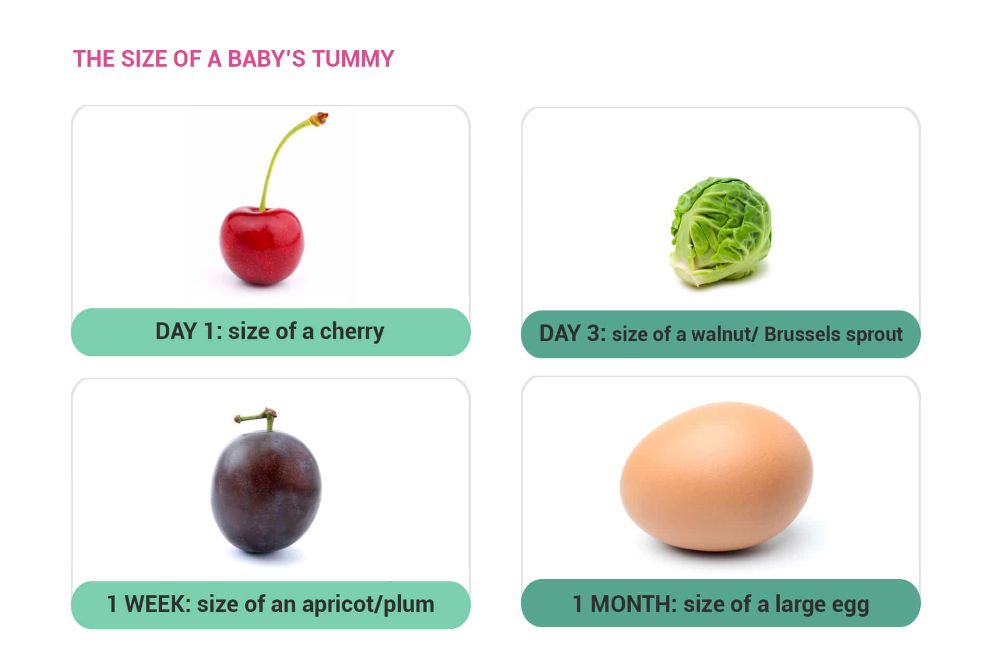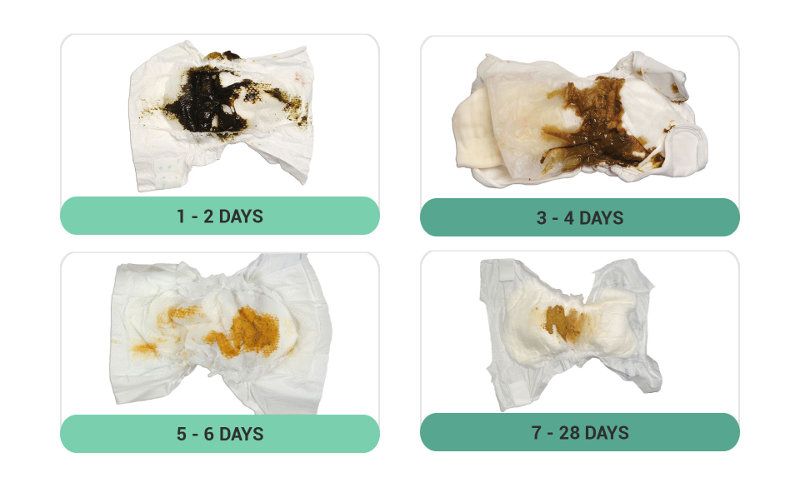Feeding Checklist
In the early weeks your baby will spend most of her waking time feeding, it’s an important time not just so your baby grows but also so she feels safe and trusts that your baby can have food whenever your baby needs it.
There’s a lot for you and your baby to learn when you start breastfeeding and sometimes it’s hard to know whether you’re worrying about something that’s perfectly normal. This checklist can help set your mind at rest. However, if you have any concerns about your baby's nappies, behaviour or weight, or if you have any concerns about your milk supply, be sure to speak to your midwife or health visitor
Checklist for effective feeding
- Your baby has 8 feeds or more in 24 hours ✓
- Your baby is feeding for between 5 and 40 minutes at each feed ✓
- Your baby has normal skin colour ✓
- Your baby is generally calm and relaxed when feeding and is content after most feeds ✓
- Your baby has wet and dirty nappies ✓
- Breastfeeding doesn't hurt ✓
- When your baby is 3-4 days old and beyond you should be able to hear your baby swallowing frequently during the feed ✓
If you don't tick all the boxes, then speak to your healthcare professional as soon as you can.
When you have a new baby everything can seem a bit overwhelming.
One thing lots of new parents worry about is how often their baby breastfeeds, often made worse by people giving their unwanted opinions.
How big is my baby's tummy?
In the first few days your baby will drink very little, as their tummy is only the size of a cherry! By day 3 it will have grown to the size of a walnut or Brussel sprout. By week 1, your baby’s tummy will be the size of a plum or apricot, and by 1 month it should be the size of a large egg.
Around day 3-4 your breasts will fill with even more milk in response to your baby's feeding patterns and growing tummy. Watch out for your baby's cues telling you they're hungry, start feeding and keep going for as long as they want – this is how your body knows how much milk to make. You can find out how to learn your baby’s feeding cues here.

Nappy checklist
From a day old your baby should be having wet and dirty nappies, you can check what you should expect to see in the image and chart below.

Baby's age |
Wet nappies |
Dirty nappies |
1-2 days old |
1-2 or more per day - may be pink in colour because of urates* |
1 or more dark green/black ‘tar like’ called meconium |
3-4 days old |
3 or more per day nappies feel heavier |
At least 2, changing in colour and consistency – brown/green/yellow, becoming looser (‘changing stool’) |
5-6 days old |
5 or more heavy wet** | At least 2, yellow; may be quite watery |
7 days to 28 days old |
6 or more heavy wet |
At least 2, at least the size of a £2 coin yellow and watery, ‘seedy’ appearance |
*Urates are a dark pink/red substance that many babies pass in the first couple of days. If they are still pink in colour beyond the first couple of days you should tell your midwife as it may be a sign your baby is not getting enough milk.
** With new disposable nappies it's often hard to tell if they're wet, so to get an idea if how much is enough urine, take a nappy and add 2-4 tablespoons of water. This will give you an idea of what to look and feel for.
Is breast milk enough?
Many mums worry about their babies being hungry, but most of the time they have nothing to worry about. Some mums try to introduce formula feeding or solids early on, sometimes hoping that it will encourage their baby to sleep for longer periods. However, breast milk is all babies need for the first 6 months of their lives, and research shows that babies fed this way are healthier.
Most babies don't need solids until they reach 6 months old, but speak to your health visitor if you think your baby is hungry. Even after you’ve introduced them to solid food, they'll still need the goodness of breast milk, so do keep breastfeeding if you can.
Should babies sleep through the night?
Research from Swansea University challenges the idea that babies should be sleeping through the night and also disproves the myth that stopping breastfeeding or giving more solid food to babies helps them to sleep longer at night. Watch our animated video to find out more...
Exclusive breastfeeding for the first six months ensures the best outcomes for babies, and mothers need support to get this off to the best start. Ongoing help with positioning, attachments and skin to skin contact help mothers to maintain their milk supply and avoids disruption to breastfeeding.




